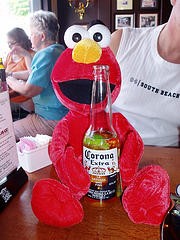Miller Marketing Alcohol to Kids? 29 Attorney Generals Express Concerns.
Energy drinks with alcohol, that look like regular energy drinks and appear targeted to underage drinkers, have activists seething and Justice Officials concerned.
Pam Darby, Coordinator of the Washington State Coalition to Reduce Underage Drinking, has a real problem with energy drink-looking products major brewers now retail in convenience and grocery stores across the nation – and she's not alone. 29 state attorney generals have also expressed concern over alco-energy drink marketing approaches that seemingly target very young consumers.
These drinks, with names such as Spark or Tilt, look for all intents and purposes identical to non-alcoholic energy drinks such as Rockstar or Amp, but with a real difference…up to 7% alcohol by volume.
Although the fine print on each can does disclose of this alcohol, alcohol control groups express real concern over the possible inadvertent consumption by underage drinker, or that parent's may not realize that these innocuous looking drinks their kids are consuming are in fact alcoholic drinks with twice as much alcohol per unit as some beers.
Miller spokesperson Julia Green says that Sparks is "marketed at the 27 year old anti-corporate consumer" and that Miller provides information to retailers at controlled sales practices, such as selling the products away from other energy type drinks.
Miller claims that their Sparks website, which looks geared towards high-school freshmen, is in fact targeting (apparently very developmentally delayed) almost 30 year olds. The website offers a single drink recipe for sparks, called the Sparks "slushy".
The company retails three versions of the drink, at original, light and plus strengths. The plus strength boasts an alcohol content of 7%, the regular, 6% - and the light, oddly, also 6%.
With as much caffeine per can as 2 cups of coffee, drinking too many cans of Sparks leads to a form of wired intoxication, in which although the reflex and inhibition effects of alcohol are felt equally, the stimulant properties of caffeine keeps drinkers from realizing just how intoxicated they are. Studies have shown that these types of stimulant cocktails put people at an increased risk of alcohol poisoning, driving under the influence, and sexual assault.
Washington State Attorney General Spokesperson J. Ryan Shannon reported that Justice Officials "Were very concerned about the marketing".


